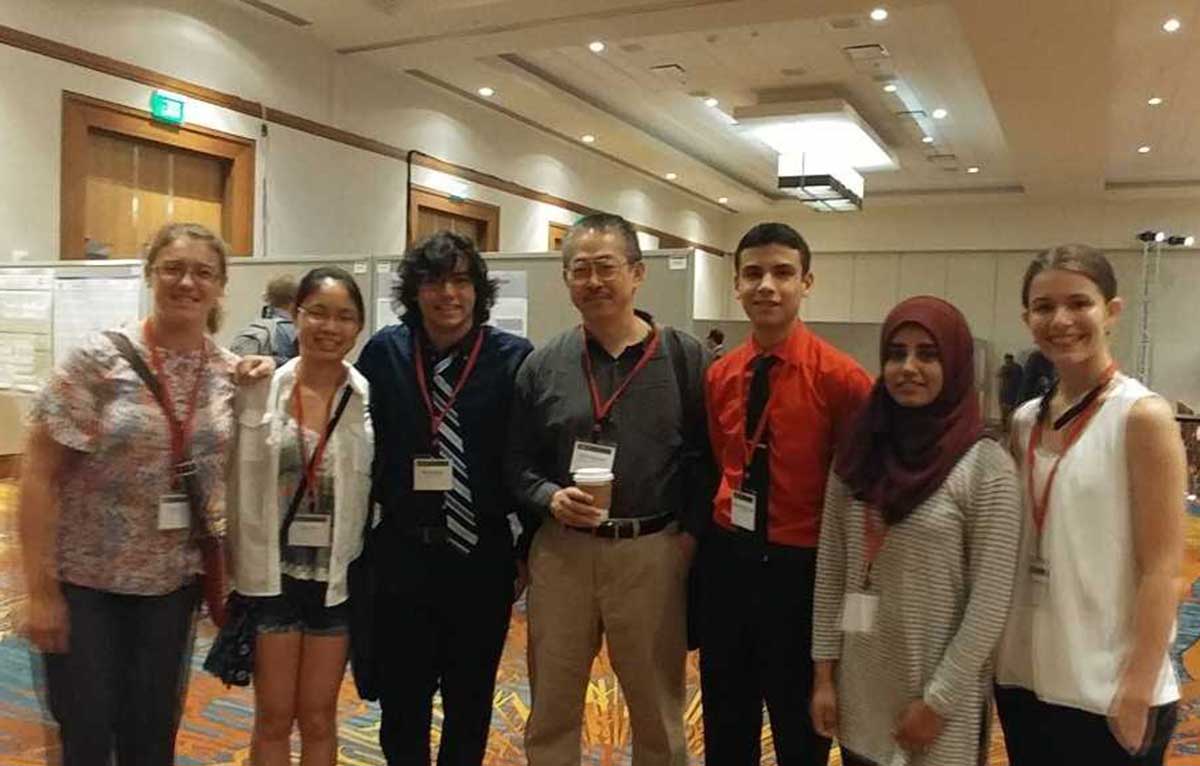High schoolers mentored by Binghamton professor present at national network science conference
Vestal youths are only high school students whose poster was accepted

Six students from Vestal High School (Vestal, New York) who worked with Binghamton University Associate Professor Hiroki Sayama throughout the 2016-17 academic year had the opportunity to present their work at NetSci 2017, a professional network science conference held in June in Indianapolis. They were the only high school students whose poster was accepted for presentation.
“How Behavioral Attributes Affect the Cohesiveness of Society: An Agent-Based Social Network Simulation,” was an investigation of community interaction conducted by Vestal High School seniors Evan George, Kashaf Nadeem and Sheng-Liang Slogar; and juniors Ewa Sulicz, Alexis Van Donsel and Joyce Zhu.
Mentored by Sayama and Vestal High School computer science teacher Carol Reynolds, the students created a simulation of a growing and evolving community of hundreds of virtual residents. They then ran and recorded approximately 200 simulations using different variables to determine what would happen to the community over a millennium. The students were surprised to discover that the community easily fractured in multiple clusters, and the conditions for the community to remain united were not trivial.
The students presented the results of their work the first evening of the NetSci conference. They also participated in talks on a wide range of subjects, splitting up so they could attend as many as possible during their three-day trip.
“This conference was a life-changing experience,” says George. “We were all pretty nervous about presenting our work, but people were interested in our concept and commended us. They were shocked to learn we’re high school students!”
“The students did a fantastic job at NetSci,” says Sayama, who has been working with the high school for several years through the Computational Understanding of Living Systems (COULS) program. “They demonstrated computationally how our society may evolve dynamically, through an open-ended, experiential research process.”
“This was my first venture into the world of academics and research,” says George. “It has convinced me to pursue research of some kind at college.”
All three Vestal High seniors who participated in the project will attend Binghamton’s Thomas J. Watson School of Engineering and Applied Science in the fall. George and Slogar plan to study computer science, while Nadeem will major in engineering.
